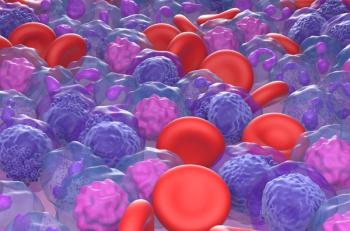
Barzolvolimab Shows Long-Term Efficacy in Chronic Spontaneous Urticaria, Improving Patient Quality of Life
Key Takeaways
- Barzolvolimab achieved sustained complete responses and improved quality of life in patients with CSU up to 76 weeks post-treatment.
- The therapy targets mast cells by inhibiting receptor tyrosine kinase KIT, crucial for mast cell function and survival.
New data shows that barzolvolimab offers sustained complete responses and significantly improved quality of life for patients with chronic spontaneous urticaria, with a favorable safety profile.
Barzolvolimab demonstrated sustained complete responses and improved quality of life (QOL) up to 76 weeks and 7 months after treatment concluded among patients with chronic spontaneous urticaria (CSU), according to a late breaking oral presentation at the
CSU is an unpredictable, mast cell–driven
Barzolvolimab targets mast cells by binding and inhibiting the activity of the receptor tyrosine kinase KIT, which mast cells require for their function and survival.1 Previously, barzolvolimab demonstrated positive 12-week results in a phase 2 clinical trial involving patients with moderate to severe CSU who were refractory to antihistamines, including those with biologic-refractory disease.3 The study met its primary end point, with significant improvement in Urticaria Activity Score over 7 days (UAS7) compared with placebo at 12 weeks across all tested dose groups.
The new data showed improvements in UAS7 as early as 1 week after dosing.1 Barzolvolimab achieved the primary efficacy end point at all dose levels, demonstrating a statistically significant mean change from baseline to week 12 in UAS7 compared with placebo. These improvements sustained or deepened at week 52 and continued to week 76. At week 76, patients treated with 150 mg every 4 weeks (Q4W) showed a UAS7 mean change of –20.42 from baseline, and those treated with 300 mg every 8 weeks (Q8W) demonstrated a change of –21.10.
At week 76, barzolvolimab achieved a complete response (no itch/hives; UAS7 = 0) in approximately 41% of patients receiving 150 mg Q4W and 35% of those receiving 300 mg Q8W. Additionally, 56% of patients treated with 150 mg Q4W and 47% of patients treated with 300 mg Q8W demonstrated well-controlled disease (UAS7 ≤ 6).
Barzolvolimab significantly improved patient lives based on the Dermatology Life Quality Index. Patients experienced significant relief at 76 weeks, with 48% of those treated with 150 mg Q4W and 40% of those who received 300 mg Q8W reporting no impact from CSU on their QOL. Clinical guidelines emphasize achieving a complete response (UAS7 = 0), recognizing its direct link to the greatest improvements in patients' QOL. Researchers observed these strong responses and QOL improvements in all patients, even those with prior omalizumab experience.
“Barzolvolimab provided meaningful clinical benefit to more than 90% of the patients on study, including patients with severe disease refractory to omalizumab, and demonstrated a level of sustained complete response after the completion of active therapy that is unprecedented in CSU,” said Martin Metz, MD, professor in the Department of Dermatology and Allergy, head of translational research and deputy head of clinical trials at Charité Universitätsmedizin, and the lead investigator of the study,
Barzolvolimab demonstrated a favorable safety profile and was well tolerated through 76 weeks. Patients experienced mostly grade 1, mechanism-related, and reversible adverse events. The study did not identify any new safety signals during the follow-up period.
The study previously disclosed that neutropenia events rapidly resolved even as patients continued barzolvolimab treatment, with no observed association between neutropenia and infections. Investigators also found that neutrophil counts returned to baseline after patients completed barzolvolimab treatment, and mild hair color changes and skin hypopigmentation observed in the study proved reversible when patients discontinued treatment.
“Importantly, across this large, 76 week phase 2 trial, barzolvolimab also presented a favorable safety profile, further supporting barzolvolimab’s significant potential to become a transformative treatment option for patients suffering from this often very severe and debilitating disease,” Metz concluded.
References
1. Celldex presents unprecedented 76 week results from barzolvolimab phase 2 study in chronic spontaneous urticaria at EAACI Congress 2025. Press release. Celldex; June 12, 2025. Accessed June 16, 2025.
2. Santoro C. Complete responses seen with emerging therapies for chronic spontaneous urticaria. The American Journal of Managed Care®. April 16, 2025. Accessed June 16, 2025.
3. Celldex therapeutics presents positive 12 week results from barzolvolimab phase 2 study in chronic spontaneous urticaria. Press release. Celldex; February 24, 2024. Accessed June 16, 2025.
Newsletter
Stay ahead of policy, cost, and value—subscribe to AJMC for expert insights at the intersection of clinical care and health economics.













































